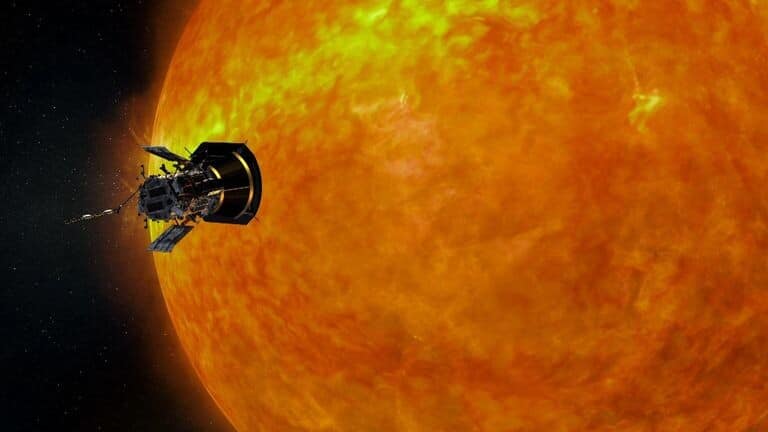
NASA's Parker spacecraft—fastest human-made object—to 'touch' Sun's scorching surface
What's the story
NASA's Parker Solar Probe is all set to make history as it gears up for its closest-ever approach to the Sun later today. The spacecraft will get within 6.1 million kilometers of the solar surface, making it humanity's closest encounter with a star. NASA scientist Joe Westlake used a football field analogy to explain this distance, saying if Sun and Earth were on opposite ends of a football field, Parker "would be on the 4-yard line."
Speed record
Parker Solar Probe to become fastest human-made object
The Parker Solar Probe will fly by at speeds of up to 692,000km/hour, a speed that would take it from Washington, DC, to Tokyo in under a minute. This will make the probe the fastest human-made object in history. The uncrewed mission has been leading up to this historic milestone since it launched on August 12, 2018.
Mission progress
Parker Solar Probe's journey and achievements
The probe is named after Dr. Eugene Parker, an astrophysicist who pioneered heliophysics. He was also the first living person to have a spacecraft named after him. In December 2021, the probe became the first spacecraft to "touch the Sun" by successfully flying through its corona or upper atmosphere, sampling particles and magnetic fields. Over its seven-year mission, it has helped scientists understand some of the Sun's greatest mysteries.
Final approaches
Parker Solar Probe's final flybys and future plans
The upcoming flyby on Christmas Eve will be the first of the spacecraft's final three closest approaches, with the other two expected on March 22 and June 19. At this proximity, the probe will be able to fly through plumes of plasma as well as within a solar eruption if one releases from the Sun. The spacecraft is built to withstand the extremes of the Sun and has flown through coronal mass ejections in the past with no impact.
Design features
Parker Solar Probe's design and autonomous operation
The Parker Solar Probe carries a carbon foam shield, which is 11.4cm thick and 2.4 meters wide. It was tested on Earth prior to launch and found to withstand temperatures close to 1,400 degrees Celsius. However, on Christmas Eve, the shield may encounter temperatures as high as 980 degrees Celsius. The spacecraft will perform its flyby autonomously as mission control will be out of contact with the probe due to its closeness to the Sun.